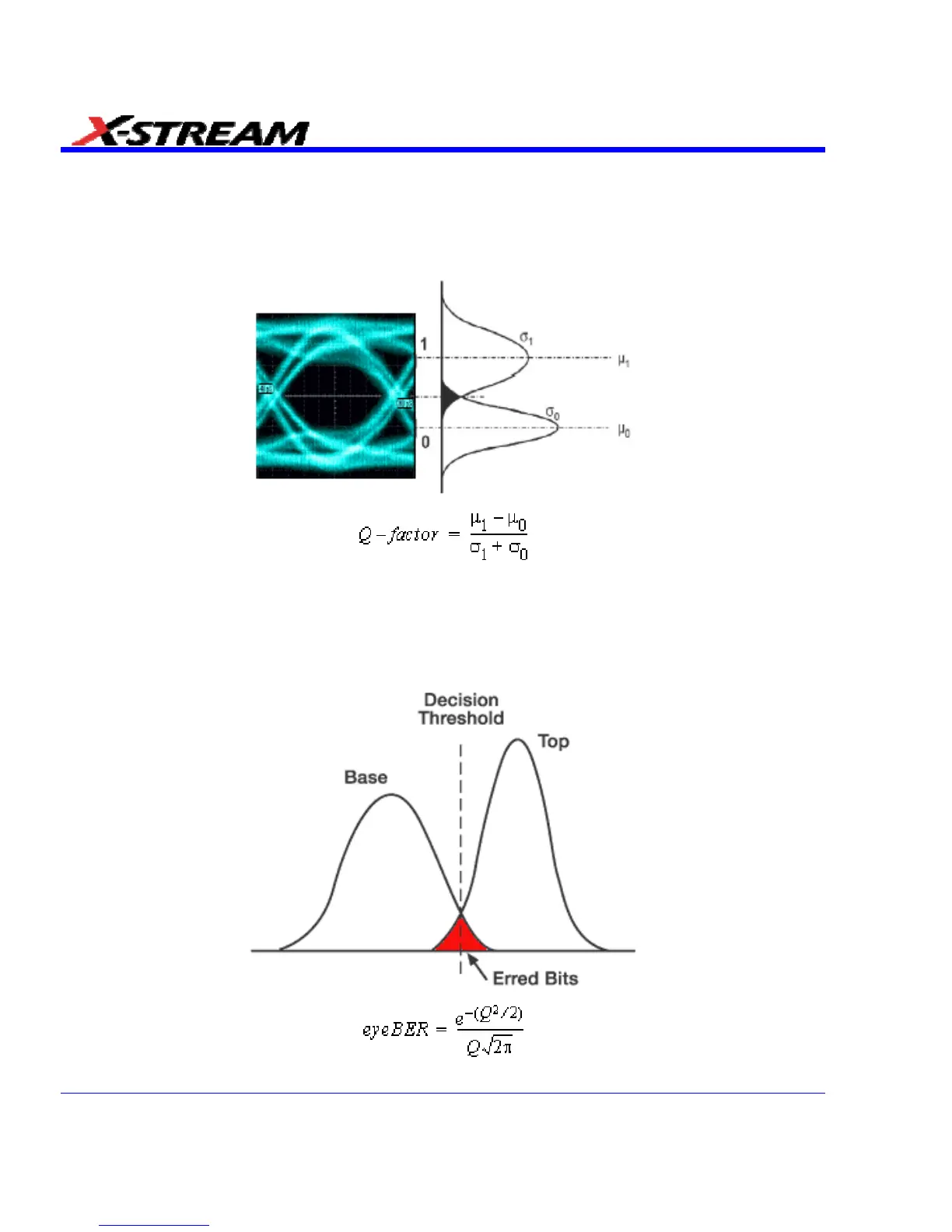Q Factor or BER
The Q factor is a measure of the overall signal-to-noise ratio of the data signal. It is computed by
taking the eye amplitude (the difference between the mean values of the "1" and "0" levels) and
dividing it by the sum of the noise values (standard deviations of the "1" and "0" levels). All of
these measurements are taken in the center (usually 20%) of the eye.
eyeBER
EyeBER is the estimated bit error rate from an eye diagram. It is calculated using the intersection
of the distribution of the one and zero levels. EyeBER differs from BER in that eyeBER is
calculated from Q-factor and is, therefore, based on signal-to-noise ratio; BER, on the other hand,
is based on jitter.
372 SDA-OM-E Rev H

